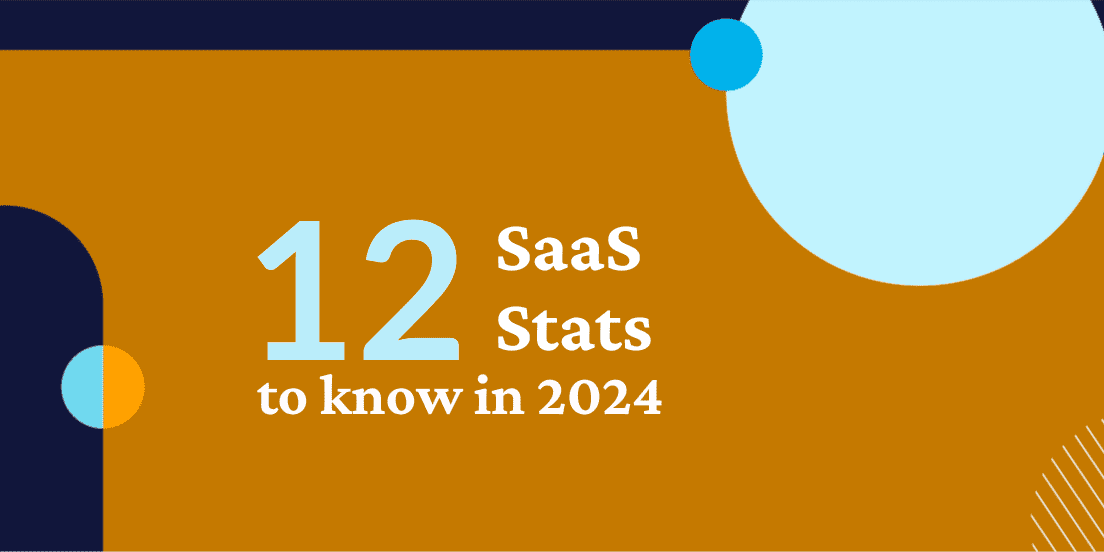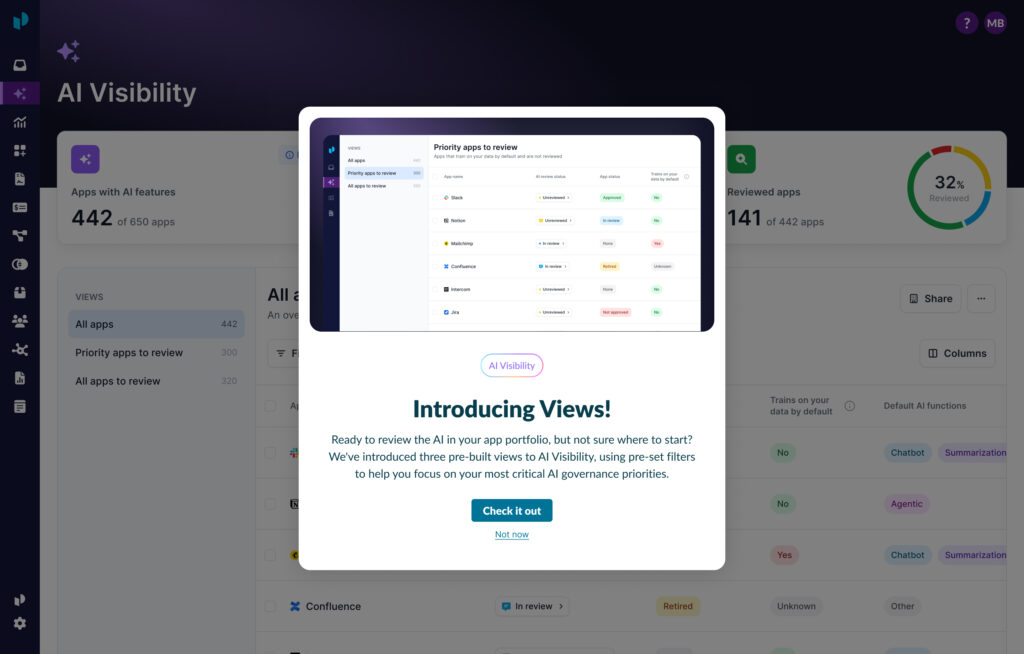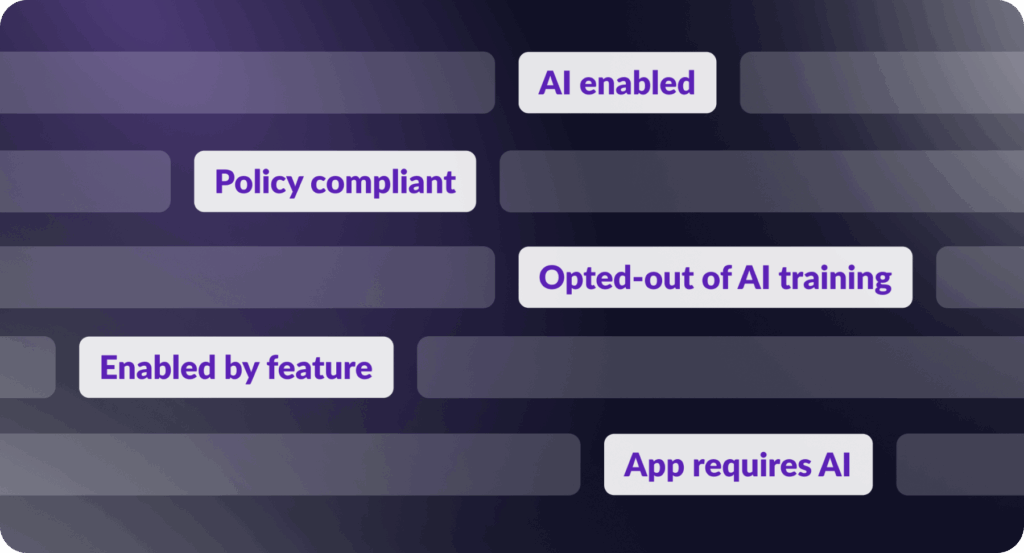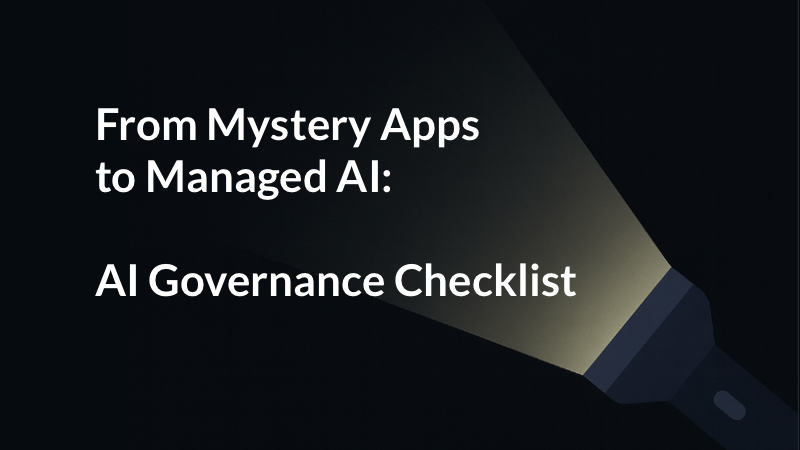
12 SaaS statistics that every IT manager should see in 2024
How much time does your IT team spend on managing your SaaS applications? Do you have any SaaS statistics to compare with? We hear from many companies that the challenges of managing SaaS apps leave IT with little to no time to focus on more strategic initiatives. The situation has become even more complicated as the rise in hybrid and remote work has led to larger application portfolios and the macroeconomic climate has teams focused on optimizing costs.
To understand what’s at stake for IT leaders, consider these 12 SaaS statistics that highlight why IT needs the right tools to effectively manage SaaS.
What are the SaaS statistics to know in 2024?
Here are the top SaaS statistics you should know in 2024:
Statistic 1: Companies have hundreds of SaaS apps
At Productiv, we routinely monitor trends in the industry, including SaaS sprawl. And in 2024, we found that the average SaaS portfolio now comprises 342 apps. IT teams are dealing with managing hundreds of apps — which also means managing more licenses, spend, compliance risks, and user requests. Typically these teams are juggling the demands of a large app portfolio without additional resources.
Statistic 2: SaaS spend is continuing to grow
Gartner forecasts that annual SaaS spend will grow by 19%, which means companies (and often line-of-business managers) will continue to adopt more tools. The intent behind these SaaS purchases is of course to help arm employees with the right apps to be their most productive, but the growth puts more strain on limited IT resources. IT is responsible for governing and securing all of these apps, including apps not managed by IT, also known as shadow IT.
Statistic 3: The majority of enterprise apps aren’t managed
As of 2024, 48% of enterprise apps aren’t managed (meaning no one pays close attention to things like renewal dates, licenses, app usage, security, and compliance), according to Productiv’s State of SaaS — Growth report. In fact, for at least the last three years, shadow IT has accounted for around half of the apps in the average SaaS portfolio. Teams are increasingly problem-solving app needs on their own by directly purchasing or signing up for tools. For IT, the rise of unmanaged apps can cause budget risks as well as larger threats to organizational security and compliance.
Statistic 4: Teams are using dozens of apps
Our data shows that most teams now use 60-80 SaaS apps on average. This is a byproduct of the increase in SaaS purchases by line-of-business owners. The increase in SaaS is great for employee productivity in the short term, but it can create challenges for the IT teams tasked with managing the SaaS portfolio and ensuring governance.
Statistic 5: SaaS purchase decisions are more distributed
According to Gartner, 34% of SaaS purchases now involve line-of-business managers. Although IT leaders remain the most common decision makers when it comes to buying SaaS, those decisions are increasingly made with input from other key business stakeholders. It’s important that line-of-business managers have a say in the apps their team will be using. At the same time, the democratization of SaaS purchases makes the software selection process more complex for IT to manage.
Statistic 6: Managing SaaS has created new pain points for IT
We surveyed IT leaders in partnership with Pulse in our State of SaaS Management eBook, and 99% said their day-to-day operations were impacted by the pain points of managing SaaS applications. The majority of IT leaders (68%) said SaaS management had a moderate or significant impact on daily IT operations. While employees are reaping the benefits of SaaS being more affordable and easier to adopt, IT teams are feeling the impact of managing hundreds of apps in their day-to-day work.
Statistic 7: Manual SaaS oversight is incredibly time-consuming
IT leaders listed one of their top pain points as the amount of time spent on SaaS management, in that same survey with Pulse. Nearly half (48%) said their team was spending too much time manually provisioning and managing apps. With hundreds of apps and thousands of licenses to manage, IT teams are using significant resources to provision and deprovision licenses. What’s more, these tasks are so time-consuming that IT is often playing catch-up on deprovisioning and removing licenses weeks after former employees have left the company.
Statistic 8: Less than half of all SaaS licenses are used regularly
Productiv’s data shows that the average percentage of engaged users across all apps is only 45%. In other words, more than half of the SaaS licenses a company is paying for aren’t being used regularly. Many companies may be facing issues around license forecasting or app adoption. However, without granular insights into app engagement, IT teams must rely on instinct or gut feeling to help improve app adoption.
Statistic 9: The number of apps available is making work more complex for employees
At the Gartner IT Symposium, Gartner shared that only 30% of employees feel that they have the correct tools to do their jobs. And 25% of employees would consider leaving their job because they don’t have the tools they need.
Large application portfolio with limited visibility can make it hard for employees to identify which internal tools they should use. This leads to frustration, using the wrong tools, or the purchase of additional tools that further grow the SaaS portfolio.
Statistic 10: Manual SaaS management leads to poor business decisions
For IT executives, 94% believe manual SaaS management methods lead to poor decision-making about SaaS spending. It’s not hard to understand why: manual SaaS management methods are time-consuming and error-ridden. A spreadsheet won’t automatically update when you add a new SaaS license, and there are too many moving parts to track within a spreadsheet.
Statistic 11: IT lacks visibility into SaaS apps
Only 3% of IT executives have complete and real-time visibility into their SaaS tools, according to Productiv research . That means 97% of decision makers don’t know exactly what SaaS apps their employees use, how much those SaaS apps are costing the company, if those apps are compliant, or a host of other facts.
Statistic 12: Centralized SaaS management offers clear benefits
Nearly 9 in 10 IT leaders (88%) believe that a centralized SaaS management solution would offer these three benefits:
This is the year to take these SaaS statistics to heart and put those beliefs about centralized SaaS management into action. It’s time for you to take back your time — and control of SaaS apps — with an intelligent SaaS Management Platform.
Make 2024 the year you manage SaaS apps effectively
Don’t let ineffective SaaS management hurt your company for yet another year. Turn to Productiv for the data, analytics, and automation you need to govern and rationalize your SaaS portfolio and streamline SaaS procurement. With a SaaS Management Platform, your teams can spend less time managing SaaS apps and more time focused on strategic initiatives that create value for your business.
Want to see how much you could save on SaaS with Productiv? Get a complementary demo, personalized for your organization.
About Productiv:
Productiv is the IT operating system to manage your entire SaaS and AI ecosystem. It centralizes visibility into your tech stack, so CIOs and IT leaders can confidently set strategy, optimize renewals, and empower employees.





